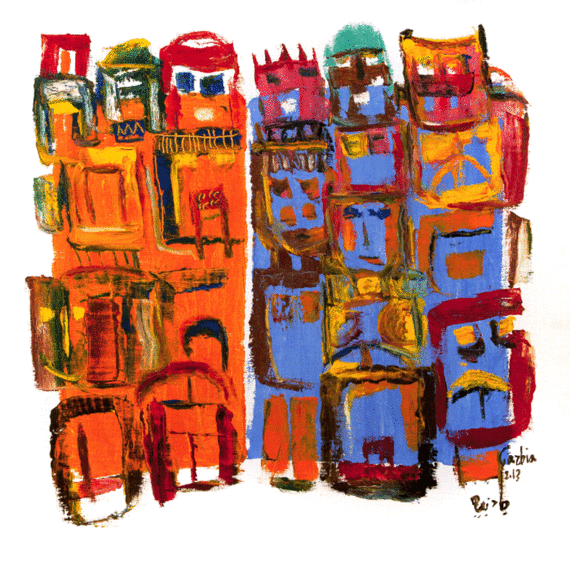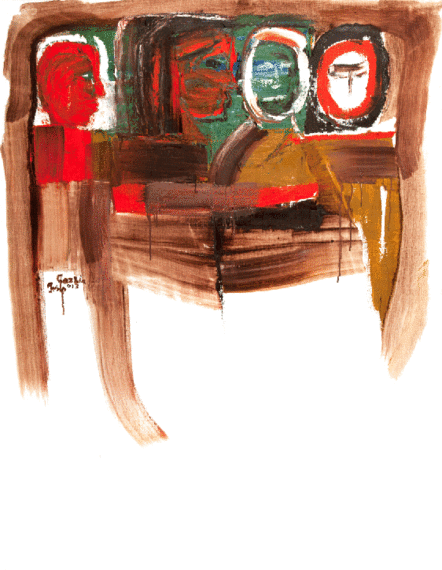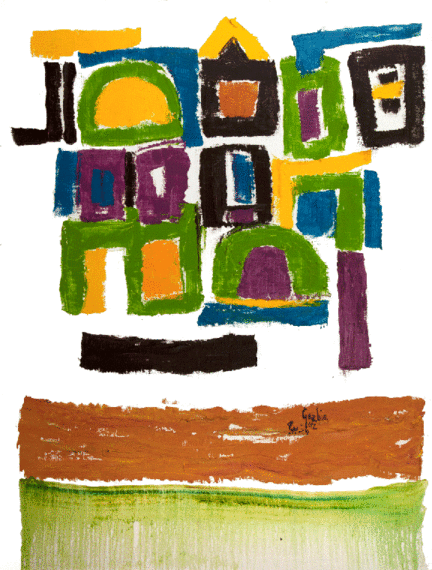Looking at recent paintings by the Egyptian artist Gazbia Sirry (b. 1925) I cannot seem to get over the mesmerizing impact of her painterly gestures. For an artist who in the 1940s and 50s trained and painted in a rigorous academic style, before she, like her other peers in the famed Group of Modern Art, combined lessons of Parisian modernism and with depiction of an Egyptian national character, her journey has been as remarkable as it has been long. And as these late paintings show, she has come close to that point only few artists are privileged to reach: that moment when the hand, mind and paint engage in a mystical dance, a spare dance along the edges of the imagination. There is something effortless, yet powerfully restrained; loquacious, yet meditative about her handling of paint in these canvases. It is as if, I am standing before an oracle whose utterance is laced with arcane proverbs and turns of phrase the meaning of which I must unravel to make sense of my world and my own imaginative powers.
In the late 1960s, following the 1967 Arab-Isreali War, Sirry's previously well-formed figures and landscapes -- reflecting the certainty of hope in the wake of the 1952 Gamal Abdel Nasser-led Revolution -- began to dissolve. The earlier pictorial realism incrementally gave way abstract forms; houses became human forms became houses. Painting became, it seems, a process of meditation about the nature of the human, and about the imagined community. Now, as these recent works suggest, painting for Sirry is, as never before, a resolutely potent medium for pondering the nature of being, of time and fate. Each and every mark she makes now come across as, not simply an exercise in manipulation of paint or of composing pictorial space, but an act of opening the window of the imagination to allow us feel the inchoate order that existed and still exists before and beyond the world we know.



